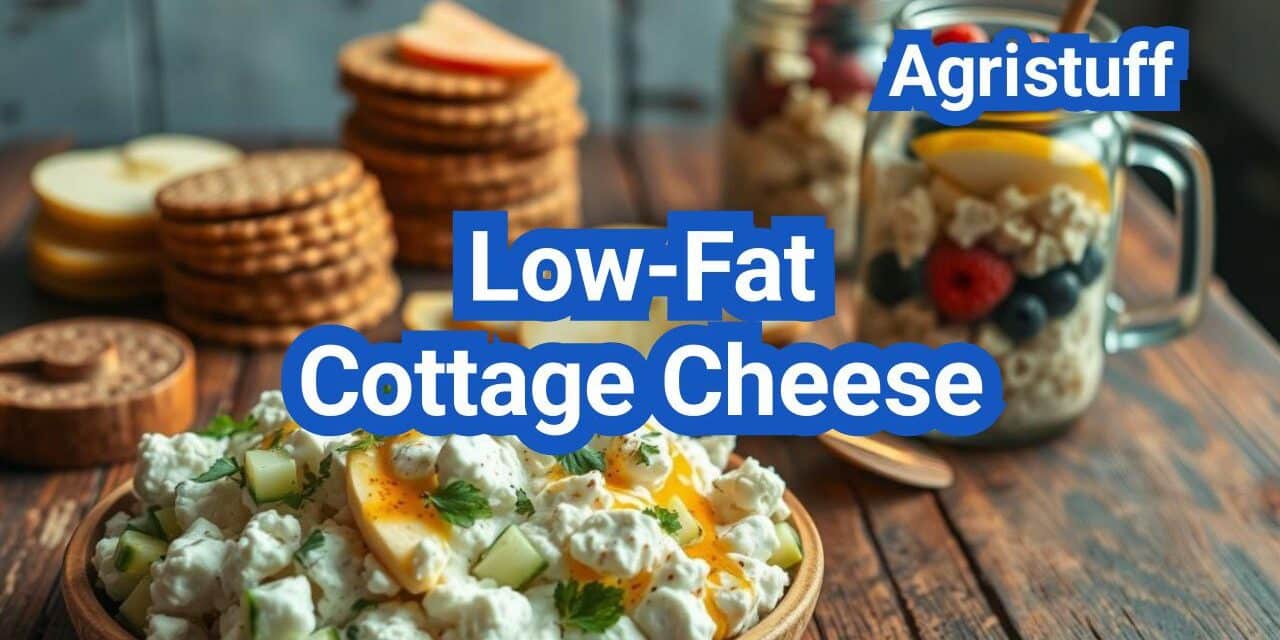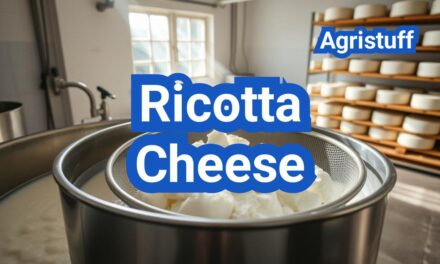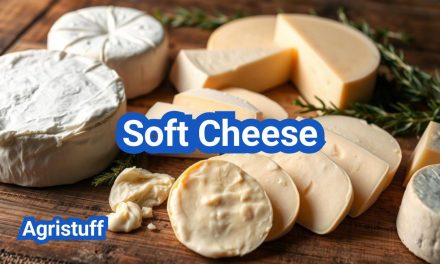This article does not contain medical advice
Cottage cheese is a versatile and convenient food that packs a nutritional punch, offering 24 grams of high-quality protein per cup. Dietitians recommend incorporating it into various dishes, such as fruit parfaits, veggie bowls, scrambled eggs, and pasta sauces.
This nutritious dairy product is not only rich in protein but also provides a good source of essential nutrients. With its creamy texture and mild flavor, low-fat cottage cheese can be used in a variety of recipes, making it a great addition to a healthy diet.
Key Takeaways
- Discover the nutritional benefits of low-fat cottage cheese, including its high protein content.
- Learn how to incorporate low-fat cottage cheese into your diet with versatile recipes.
- Explore the best low-fat cottage cheese brands available in the market.
- Understand the calorie and protein content of low-fat cottage cheese.
- Get tips on using low-fat cottage cheese in various dishes, from breakfast to dinner.
What Is Low-Fat Cottage Cheese?
Understanding the differences between low-fat and regular cottage cheese can help consumers make informed dietary decisions. Low-fat cottage cheese is made by reducing the fat content of regular cottage cheese, making it a popular choice for those watching their diet.
The Production Process
Cottage cheese is a type of dairy product that is produced by curdling milk. The curdling process involves adding acid or rennet to milk, causing it to separate into curds and whey. The curds are then processed to create the characteristic lumpy texture of cottage cheese. For low-fat cottage cheese, the fat content is reduced during the processing stage, either by using lower-fat milk or by removing some of the fat from the curds.
The production process typically involves pasteurization, acidification, and coagulation. Pasteurization kills harmful bacteria, while acidification and coagulation help in forming the curds. The curds are then cut, cooked, and drained to remove excess whey, resulting in the final product.
Low-Fat vs. Regular Cottage Cheese
The primary difference between low-fat and regular cottage cheese lies in their fat content. Regular cottage cheese can contain a significant amount of fat, especially if it’s made from whole milk. In contrast, low-fat cottage cheese has a reduced fat content, making it a healthier option for those monitoring their fat intake.
A key consideration when choosing between low-fat and regular cottage cheese is the nutritional content. Low-fat cottage cheese generally has fewer calories and less fat but retains a high protein content, making it an attractive option for fitness enthusiasts and those on a diet.
“Choosing low-fat cottage cheese can be a strategic move for those looking to manage their weight or reduce their fat intake without compromising on protein.”
When deciding between low-fat and regular cottage cheese, consumers should consider their dietary needs and preferences. While regular cottage cheese may offer a richer taste, low-fat versions provide a healthier alternative without sacrificing too much in terms of flavor and texture.
Nutritional Profile of Low-Fat Cottage Cheese
Low-fat cottage cheese stands out as a healthy addition to a balanced diet due to its impressive nutritional profile. It is rich in essential nutrients that support various bodily functions, making it a popular choice among health-conscious individuals.
Calories in Low-Fat Cottage Cheese
One of the key aspects of low-fat cottage cheese is its relatively low calorie count. A single cup of 2% cottage cheese contains approximately 80-100 calories, making it an attractive option for those monitoring their calorie intake.
Protein Content
Low-fat cottage cheese is an excellent source of protein, with a single cup providing about 24 grams of protein. This high protein content supports muscle health and can be particularly beneficial for individuals engaged in regular physical activity.
Fat Content
The fat content in low-fat cottage cheese is, as the name suggests, relatively low. A cup of 2% low-fat cottage cheese contains around 2-4 grams of fat. This makes it a preferable choice for those looking to reduce their fat intake without sacrificing nutritional value.
| Nutritional Component | Value per Cup (2% Low-Fat Cottage Cheese) |
|---|---|
| Calories | 80-100 |
| Protein | 24 grams |
| Fat | 2-4 grams |
In summary, low-fat cottage cheese offers a nutrient-dense profile that is low in calories and fat but high in protein, making it a valuable addition to a healthy diet.
Health Benefits of Low-Fat Cottage Cheese
Low-fat cottage cheese is a nutritional powerhouse that offers several health advantages. It is rich in protein, low in calories, and packed with nutrients, making it an excellent addition to a healthy diet.
Muscle Building and Recovery
The high protein content in low-fat cottage cheese makes it an ideal food for muscle building and recovery. Protein is essential for muscle repair and growth, especially after workouts. Consuming low-fat cottage cheese post-exercise can help in providing the necessary amino acids for muscle recovery.
As noted by a sports nutritionist, “Cottage cheese is a great source of casein protein, which is slowly digested and can help in muscle recovery over a longer period.”
“Cottage cheese is an excellent choice for athletes looking to boost their protein intake without consuming high amounts of fat.”
Weight Management
Low-fat cottage cheese is also beneficial for weight management. Its high protein content helps in keeping you full for longer, reducing the likelihood of overeating. Additionally, it is low in calories, making it a nutritious snack option for those looking to manage their weight.
A comparison of snack options reveals the benefits of choosing low-fat cottage cheese:
| Snack Option | Calories | Protein Content |
|---|---|---|
| Low-Fat Cottage Cheese (1 cup) | 80-100 | 11-15 grams |
| Greek Yogurt (1 cup) | 100-150 | 10-20 grams |
| Apple (1 medium) | 95 | 0.3 grams |
Bone Health
Low-fat cottage cheese is a good source of calcium, which is crucial for bone health. Calcium helps in maintaining bone density, reducing the risk of osteoporosis and fractures, especially in older adults.
In conclusion, incorporating low-fat cottage cheese into your diet can have multiple health benefits, from muscle building and recovery to weight management and bone health. Its nutritional profile makes it a valuable addition to a healthy and balanced diet.
Best Low-Fat Cottage Cheese Brands in the US
The best low-fat cottage cheese brands in the US offer a blend of nutritional value, taste, and affordability. With numerous options available, consumers can choose from a variety of products that cater to different tastes and dietary needs.
Daisy Low-Fat Cottage Cheese
Daisy is a well-known brand in the dairy industry, and its low-fat cottage cheese is a popular choice among health-conscious consumers. Daisy low-fat cottage cheese is praised for its creamy texture and mild flavor. It is available in various curd sizes, making it versatile for different recipes.
Good Culture Low-Fat Cottage Cheese
Good Culture low-fat cottage cheese stands out for its high protein content and live cultures, which are beneficial for gut health. This brand is favored by those looking for a product that not only tastes good but also provides additional health benefits.
Breakstone’s Low-Fat Cottage Cheese
Breakstone’s has been a trusted name in dairy products for decades. Their low-fat cottage cheese is known for its rich, creamy texture and is often praised for its affordability without compromising on quality.
Hood Low-Fat Cottage Cheese
Hood is another reputable brand that offers a range of dairy products, including low-fat cottage cheese. Hood’s version is appreciated for its smooth texture and subtle flavor, making it a great addition to various dishes.
When choosing among these top brands, consumers should consider factors such as nutritional content, taste preferences, and price. Each of these brands offers something unique, whether it’s the high protein content of Good Culture or the affordability of Breakstone’s.
“Cottage cheese is a nutritional powerhouse,” as noted by health experts, “and choosing a low-fat version can be a great way to incorporate more protein into your diet without adding extra fat.” By selecting one of these top brands, consumers can enjoy the benefits of low-fat cottage cheese while satisfying their taste preferences.
How to Choose the Best Low-Fat Cottage Cheese
Selecting the best low-fat cottage cheese can be a daunting task, but with the right guidance, you can make an informed decision. With so many options available, it’s essential to know what to look for to ensure you’re getting a high-quality product.
Reading Nutrition Labels
When choosing a low-fat cottage cheese, the first step is to read the nutrition label carefully. Look for products labeled as “low-fat” or “reduced-fat” to ensure they meet your dietary requirements. Check the nutrition facts to be aware of the calories, protein content, and sodium levels. Be mindful of added sugars, as some flavored cottage cheeses can contain high amounts.
Ingredients to Look For
A good low-fat cottage cheese should have a simple ingredient list. Look for products that contain live cultures, as they can aid in digestion. Some brands may also fortify their cottage cheese with additional nutrients like vitamin D or calcium. Opt for products with minimal ingredients and avoid those with artificial preservatives or flavor enhancers.
Ingredients to Avoid
When examining the ingredient list, be aware of unwanted additives. Avoid low-fat cottage cheeses with artificial sweeteners, excessive sodium, or added thickeners like gums or starches. Some products may contain flavor enhancers or coloring agents, which may not be desirable for health-conscious consumers. By being mindful of these ingredients, you can choose a cleaner, more natural product.
By following these guidelines and being diligent when reading labels, you can select a low-fat cottage cheese that fits your dietary needs and preferences, ensuring you reap the nutritional benefits without unwanted additives.
Specialty Low-Fat Cottage Cheese Options
With the rise of health-conscious eating, specialty low-fat cottage cheese options have emerged to satisfy diverse consumer demands. These varieties cater to different dietary needs, making it easier for individuals to incorporate this nutritious food into their lifestyles.
Low-Sodium Cottage Cheese
For those monitoring their sodium intake, low-sodium cottage cheese is an excellent alternative. It offers the same nutritional benefits as regular cottage cheese but with significantly less sodium, making it ideal for individuals with hypertension or those on a low-sodium diet.
Lactose-Free Cottage Cheese
Lactose-free cottage cheese is designed for individuals with lactose intolerance. This version undergoes a process that breaks down lactose, allowing those who are typically sensitive to dairy to enjoy cottage cheese without discomfort.
Organic Low-Fat Cottage Cheese
Organic low-fat cottage cheese is produced without the use of synthetic pesticides, herbicides, or fertilizers. Consumers who prioritize organic produce will find this option aligns with their values, offering a cleaner label and potentially reduced environmental impact.
Cottage Cheese with Live Cultures
Cottage cheese with live cultures contains probiotics that can support gut health. These beneficial bacteria can aid digestion and contribute to a healthy gut microbiome, enhancing overall well-being.
When choosing a specialty low-fat cottage cheese, consider your dietary needs and preferences. Whether you’re looking for low-sodium, lactose-free, organic, or a product rich in live cultures, there’s a cottage cheese variety that can meet your requirements.
Some popular brands offer these specialty options, providing consumers with a range of choices. By selecting the right type of cottage cheese, individuals can enjoy the nutritional benefits of this food while adhering to their dietary goals.
- Look for certifications like “Organic” or “Non-GMO” if these are important to you.
- Check the ingredient list to ensure it aligns with your dietary needs.
- Consider the brand’s reputation for quality and commitment to health.
By being mindful of these factors, consumers can make informed decisions about their cottage cheese purchases, enjoying the versatility and health benefits that this food offers.
Low-Fat Cottage Cheese for Breakfast

Low-fat cottage cheese is a versatile ingredient that can elevate your breakfast routine with its high protein content and creamy texture. Incorporating it into your morning meal can provide a nutritious start to your day.
Sweet Breakfast Ideas
For those with a sweet tooth, low-fat cottage cheese can be blended into a delicious smoothie with fruits like berries or banana. You can also layer it with granola and fresh fruit to create a cottage cheese parfait, a delightful and healthy breakfast option.
- Add honey or maple syrup for extra sweetness
- Mix with vanilla extract for enhanced flavor
- Top with sliced almonds or walnuts for crunch
Savory Breakfast Ideas
If you prefer savory flavors, low-fat cottage cheese can be a great addition to your scrambled eggs, providing an extra boost of protein. It can also be used as a topping for whole-grain toast or as a filling in omelets.
- Season with salt, pepper, and herbs like chives or parsley
- Mix with diced vegetables such as bell peppers or spinach
- Use as a base for a breakfast burrito filling
By incorporating low-fat cottage cheese into your breakfast, you can enjoy a variety of sweet and savory breakfast recipes that are not only delicious but also packed with nutrients.
Low-Fat Cottage Cheese in Main Dishes

Low-fat cottage cheese is a versatile ingredient that can elevate main dishes with its creamy texture and high protein content. It’s an excellent way to add nutrition and variety to your meals.
Pasta and Casserole Recipes
Cottage cheese can be a game-changer in pasta and casserole recipes, adding a rich, creamy texture without the need for heavy cream or excessive cheese. Try mixing it with cooked pasta, marinara sauce, and sautéed vegetables for a quick and satisfying meal.
For a healthier lasagna, layer low-fat cottage cheese with spinach, lasagna noodles, and marinara sauce. This not only reduces the calorie count but also boosts the protein content of the dish.
Stuffed Vegetables
Stuffed vegetables are a great way to incorporate low-fat cottage cheese into your main dishes. Bell peppers, zucchini, and tomatoes can be filled with a mixture of cottage cheese, herbs, and spices, then baked until tender.
This method not only adds protein to your meal but also reduces the carbohydrate content, making it suitable for various dietary needs.
Protein-Packed Salads
Salads can be transformed into filling main courses by adding low-fat cottage cheese. Mix it with chopped vegetables, nuts, and seeds for a nutritious and filling salad.
For example, a Greek salad can be made more substantial by adding a dollop of cottage cheese alongside olives, tomatoes, cucumbers, and a sprinkle of oregano.
By incorporating low-fat cottage cheese into your main dishes, you can create meals that are not only delicious but also packed with protein and nutrients.
Healthy Snacks Using Low-Fat Cottage Cheese

Healthy snacking just got easier with low-fat cottage cheese as your go-to ingredient. Low-fat cottage cheese is a versatile and nutritious option that can be used in a variety of snacks, suitable for different occasions and age groups.
Quick Protein Snacks
For a quick protein boost, consider combining low-fat cottage cheese with fruit or nuts. A simple mix of cottage cheese and sliced peaches or berries makes for a satisfying snack. You can also add a sprinkle of cinnamon or vanilla extract for extra flavor.
Protein-Packed Snack Ideas:
- Cottage cheese with fruit
- Cottage cheese with nuts and seeds
- Cottage cheese and honey on whole-grain crackers
Pre and Post-Workout Options
Low-fat cottage cheese is an excellent choice for pre and post-workout snacks due to its high protein content. It helps in muscle recovery and can be easily digested. Try pairing it with banana slices or a handful of almonds for a quick energy boost.
| Snack Option | Pre-Workout | Post-Workout |
|---|---|---|
| Cottage cheese with banana | Yes | Yes |
| Cottage cheese with almonds | Yes | Yes |
| Cottage cheese with cucumber slices | Yes | No |
Kid-Friendly Cottage Cheese Snacks
Making healthy snacks for kids can be fun with low-fat cottage cheese. You can create a fruit parfait by layering cottage cheese, fruit, and granola in a cup. Another idea is to mix cottage cheese with a bit of honey and serve it with apple slices or crackers.
Kid-Friendly Snack Ideas:
- Cottage cheese fruit parfait
- Cottage cheese and honey on apple slices
- Cottage cheese stuffed celery sticks
By incorporating low-fat cottage cheese into your snack routine, you can enjoy a range of healthy, protein-rich options that cater to different needs and preferences.
Low-Fat Cottage Cheese in Baking

Baking with low-fat cottage cheese not only reduces the fat content but also adds moisture and protein, making it an excellent ingredient for healthier desserts and savory baked goods.
Substituting for Higher-Fat Ingredients
One of the primary benefits of using low-fat cottage cheese in baking is its ability to substitute for higher-fat ingredients. It can replace sour cream, heavy cream, or even some of the butter or oil in recipes, significantly reducing the overall fat content.
For instance, when making muffins or cakes, you can use low-fat cottage cheese to add moisture without the need for extra oil or butter. This substitution not only makes the baked goods healthier but also enhances their texture.
Cheesecakes and Desserts
Low-fat cottage cheese is particularly well-suited for making cheesecakes and other desserts. Its creamy texture makes it an ideal base for cheesecakes, and when blended with other ingredients like eggs, sugar, and vanilla, it creates a smooth and delicious filling.
Here’s a simple comparison of traditional cheesecake ingredients versus a healthier version using low-fat cottage cheese:
| Ingredient | Traditional Cheesecake | Low-Fat Cottage Cheese Cheesecake |
|---|---|---|
| Main Cheese | Full-fat cream cheese | Low-fat cottage cheese |
| Sour Cream | Full-fat sour cream | Low-fat Greek yogurt or cottage cheese |
| Eggs | Whole eggs | Whole eggs or egg whites |
Savory Baked Goods
Low-fat cottage cheese isn’t just limited to desserts; it can also be used in savory baked goods. It adds moisture and a subtle tanginess to bread, scones, and muffins, making them more flavorful and nutritious.
For example, you can add low-fat cottage cheese to your favorite savory muffin recipe to enhance the moisture content and add a boost of protein. Similarly, using it in bread dough can result in a more tender crumb and a more satisfying loaf.
Low-Fat Cottage Cheese Dips and Spreads

Cottage cheese, with its creamy texture, is an ideal base for a variety of savory dips and sweet spreads. It’s a versatile ingredient that can be blended with numerous flavors and ingredients to create delicious and healthy snacks.
Savory Dips
Savory dips made with low-fat cottage cheese are perfect for snacking or as a party appetizer. Here are a few ideas:
- Spinach and Herb Dip: Blend cottage cheese with spinach, parsley, dill, and a squeeze of lemon juice.
- Roasted Red Pepper Dip: Mix cottage cheese with roasted red peppers, garlic, and a pinch of paprika.
- Garlic and Chive Dip: Combine cottage cheese with minced garlic, chives, and a sprinkle of black pepper.
| Dip | Main Ingredients | Taste |
|---|---|---|
| Spinach and Herb | Cottage cheese, spinach, parsley, dill | Fresh, tangy |
| Roasted Red Pepper | Cottage cheese, roasted red peppers, garlic | Sweet, smoky |
| Garlic and Chive | Cottage cheese, garlic, chives | Pungent, savory |
Sweet Spreads
Low-fat cottage cheese can also be turned into sweet spreads, perfect for topping toast, fruit, or using as a filling for cakes and pastries.
- Fruit and Honey Spread: Blend cottage cheese with honey and your choice of fruit, such as berries or peaches.
- Vanilla and Cinnamon Spread: Mix cottage cheese with vanilla extract and a sprinkle of cinnamon.
These dips and spreads are not only delicious but also packed with protein, making them a great snack option. Experiment with different flavors and ingredients to find your favorite combinations.
Storing and Extending the Shelf Life of Low-Fat Cottage Cheese

To keep your low-fat cottage cheese fresh for a longer period, it’s essential to store it correctly. Proper storage not only maintains its quality but also ensures safety for consumption over its shelf life.
Proper Storage Techniques
Low-fat cottage cheese should be stored in the refrigerator at a temperature below 40°F (4°C). It’s crucial to keep it in an airtight container to prevent contamination and exposure to air, which can cause it to spoil faster. If you’ve purchased it in a container that’s not airtight, consider transferring it to an airtight container or a glass jar with a tight-fitting lid.
Tips for Storage:
- Always check the expiration date or “Best By” date on the packaging before storing.
- Keep it away from strong-smelling foods, as cottage cheese can absorb odors easily.
- Do not freeze cottage cheese, as it can change the texture and make it watery upon thawing.
Signs of Spoilage
Even with proper storage, it’s essential to check your cottage cheese regularly for signs of spoilage. Here are some indicators that your cottage cheese has gone bad:
- An off or sour smell.
- Visible mold or slime on the surface.
- A change in texture, such as becoming too watery or developing an unusual consistency.
- An off taste or bitterness.
If you notice any of these signs, it’s best to discard the cottage cheese to avoid foodborne illness.
| Storage Method | Effectiveness | Notes |
|---|---|---|
| Airtight Container in Refrigerator | High | Best method for maintaining freshness. |
| Original Container | Moderate | Ensure it’s sealed properly after opening. |
| Freezing | Low | Not recommended due to texture changes. |
By following these storage tips and being aware of the signs of spoilage, you can enjoy your low-fat cottage cheese for a longer period while maintaining its quality and safety.
Common Mistakes When Using Low-Fat Cottage Cheese

Low-fat cottage cheese is a versatile ingredient, but its success in recipes depends on avoiding common pitfalls. Whether you’re using it for breakfast, as a snack, or in main dishes, understanding how to work with low-fat cottage cheese can elevate your cooking and ensure you get the most nutritional benefits.
Cooking Errors to Avoid
One of the most common mistakes when cooking with low-fat cottage cheese is overcooking or heating it too quickly. This can cause the cheese to become rubbery or separate, affecting its texture and appearance.
- Overheating: Low-fat cottage cheese should be heated gently to prevent it from becoming tough or grainy.
- Insufficient Mixing: Failing to mix cottage cheese thoroughly before adding it to recipes can result in an uneven texture.
- Incorrect Substitution: Using low-fat cottage cheese as a direct substitute in recipes without adjusting other ingredients can lead to disappointing results.
Flavor Pairing Mistakes
Pairing low-fat cottage cheese with the wrong flavors can also lead to unappealing dishes. It’s essential to balance its mild taste with complementary ingredients.
- Overpowering Flavors: Avoid pairing cottage cheese with very strong or pungent flavors that can overwhelm its delicate taste.
- Lack of Seasoning: Not seasoning the cottage cheese adequately can result in a bland dish.
- Incompatible Ingredients: Mixing cottage cheese with ingredients that don’t complement its flavor or texture can lead to an unpalatable dish.
By being aware of these common mistakes and taking steps to avoid them, you can make the most of low-fat cottage cheese in your cooking and enjoy its nutritional benefits.
Making Low-Fat Cottage Cheese a Healthy Staple
Incorporating low-fat cottage cheese into your diet can have numerous health benefits, from supporting muscle building and recovery to aiding in weight management and promoting bone health. With its rich nutritional profile and versatility in various dishes, it’s an ideal addition to a healthy eating plan.
Low-fat cottage cheese can be enjoyed in a variety of ways, from breakfast to snacks and main dishes, making it easy to make it a healthy staple. Brands like Daisy, Good Culture, and Breakstone’s offer high-quality options that cater to different tastes and dietary needs.
By choosing the right type of low-fat cottage cheese and incorporating it into your meals, you can reap its benefits while enjoying delicious and nutritious food. Start exploring the world of low-fat cottage cheese today and discover how it can enhance your overall health and wellbeing.
FAQ
What is low-fat cottage cheese?
Low-fat cottage cheese is a type of cheese that is made from the curds of milk, with a reduced fat content compared to regular cottage cheese. It is a popular dairy product known for its high protein content, versatility in recipes, and numerous health benefits.
How is low-fat cottage cheese made?
Low-fat cottage cheese is made by curdling milk with acid or rennet, then draining the whey and rinsing the curds. The curds are then creamed to achieve the desired consistency, and the fat content is adjusted to create a lower-fat version.
What are the nutritional benefits of low-fat cottage cheese?
Low-fat cottage cheese is an excellent source of protein, calcium, and other essential nutrients. It is typically low in calories and fat, making it a popular choice for those looking to manage their weight or follow a healthier diet.
Can I use low-fat cottage cheese in baking?
Yes, low-fat cottage cheese can be used in baking as a substitute for higher-fat ingredients. It can add moisture, protein, and flavor to baked goods, such as cheesecakes, muffins, and scones.
How do I choose the best low-fat cottage cheese?
When choosing a low-fat cottage cheese, look for products with minimal ingredients, no added sugars, and a clean label. Check the nutrition label to ensure it meets your dietary needs and preferences.
What are some healthy snack ideas using low-fat cottage cheese?
Low-fat cottage cheese can be used to make a variety of healthy snacks, such as fruit parfaits, protein-packed dips, and kid-friendly snack cups. It can also be paired with fruit, nuts, or veggies for a quick and easy snack.
Can I freeze low-fat cottage cheese?
While it’s technically possible to freeze low-fat cottage cheese, it’s not recommended as it can affect the texture and consistency. If you need to store it for an extended period, consider refrigerating it at a consistent temperature below 40°F (4°C).
How long does low-fat cottage cheese last?
The shelf life of low-fat cottage cheese varies depending on the brand, storage conditions, and handling. Typically, it can last for 7-10 days when stored properly in the refrigerator. Always check the expiration date and look for u003cstrongu003esigns of spoilageu003c/strongu003e before consuming.
What are some common mistakes to avoid when using low-fat cottage cheese?
Common mistakes to avoid when using low-fat cottage cheese include overcooking, which can cause it to become dry and rubbery, and not draining excess liquid, which can affect the texture of dishes. Additionally, be mindful of u003cstrongu003eflavor pairing mistakesu003c/strongu003e, such as combining it with strong flavors that may overpower its delicate taste.
Is low-fat cottage cheese suitable for lactose intolerant individuals?
Some brands offer lactose-free low-fat cottage cheese, making it a suitable option for those with lactose intolerance. However, it’s essential to check the label or consult with the manufacturer to confirm the product’s lactose content.
Conclusion of: Low Fat Cottage Cheese
Why low-fat cottage cheese is trending (and what “low fat” really means)
Low fat cottage cheese is soaring in U.S. grocery carts because it delivers high protein with fewer calories and less saturated fat than full-fat versions, making low fat cottage cheese a smart everyday staple for weight- and heart-conscious eaters. By regulation, foods labeled “low fat” provide ≤3 g total fat per serving, so low fat cottage cheese must meet that cap based on the serving size shown on the Nutrition Facts label ( FDA low-fat definition ).
What a typical ½-cup of low-fat cottage cheese delivers
A standard ½-cup (≈110–113 g) of low fat cottage cheese usually provides about 80–100 calories, 12–14 g protein, ~2–2.5 g fat, and a few grams of carbohydrate, which is why low fat cottage cheese shows up in breakfast bowls, snack dips, and lightened pasta bakes without blowing your calorie budget. If you need a benchmark panel for low fat cottage cheese nutrition, use a current USDA-based entry ( MyFoodData: low-fat cottage cheese ).
How low-fat cottage cheese fits your daily Dairy Group
Two cups of low fat cottage cheese count as one cup-equivalent of dairy in the U.S. MyPlate system, so a ½-cup of low fat cottage cheese gives you a quarter of a cup-equivalent toward the typical 3 cup-equivalents recommended for most people ages 9+. This is useful when planning how low fat cottage cheese fits into balanced meals across the day ( USDA MyPlate—Dairy ).
Sodium matters—especially with low-fat varieties
Because curds are rinsed and salted, low fat cottage cheese can be surprisingly high in sodium, so low fat cottage cheese shoppers should compare labels. The American Heart Association suggests an ideal limit of 1,500 mg/day, with a cap of 2,300 mg/day for adults, making “no salt added” or “low sodium” low fat cottage cheese tubs valuable options for many people ( AHA: sodium guidance ).
Decoding sodium & fat claims on the label
When choosing low fat cottage cheese, it helps to know FDA claim thresholds: “low fat” ≤3 g fat/serving; “low sodium” ≤140 mg/serving; and “no salt added” means salt wasn’t added during processing (but sodium may still be naturally present). Use these legal definitions to judge any low fat cottage cheese claim you see ( FDA: sodium claim definitions ).
Reading the Nutrition Facts label for smarter picks
The Nutrition Facts label helps you compare protein, saturated fat, and sodium across low fat cottage cheese brands, and it standardizes serving sizes so low fat cottage cheese is easy to evaluate side-by-side. Prioritize higher protein per ½-cup and sodium that fits your day while scanning the ingredients list on low fat cottage cheese tubs ( FDA: Using the Nutrition Facts Label ).
Best low-fat cottage cheese picks you’ll actually find in U.S. stores
Below are nationally distributed options of low fat cottage cheese with solid nutrition and availability; formulations change over time, so check your tub’s panel each time you buy low fat cottage cheese ( MyPlate: make better dairy choices ).
Good Culture Low-Fat Classic (2% milkfat)
This low fat cottage cheese is known for creamy curds, live & active cultures, and roughly 14 g protein per ½-cup, making Good Culture a dependable low fat cottage cheese for bowls, dips, and pasta fillings alike ( Good Culture—Low-Fat Classic ).
Daisy 2% Low Fat Cottage Cheese
If you want a short ingredient list and live & active cultures, this low fat cottage cheese from a legacy brand is widely available and easy to use in both sweet and savory recipes featuring low fat cottage cheese ( Daisy—Low-Fat 2% Cottage Cheese ).
Friendship Dairies 1% No Salt Added
For the lowest sodium profiles, this no-salt-added low fat cottage cheese is a smart buy; always verify per-serving sodium on your exact tub of low fat cottage cheese since retailer panels can vary slightly ( Sprouts: Friendship 1% No Salt Added ).
Hood No Salt Added Low Fat Cottage Cheese
This regional favorite offers a no-salt-added take on low fat cottage cheese, giving label-watchers an easier path to enjoying low fat cottage cheese while staying within personal sodium targets ( Hood—No Salt Added Low Fat Cottage Cheese ).
Lactaid Lactose-Free Lowfat Cottage Cheese
If lactose is a concern, this low fat cottage cheese from Lactaid eliminates lactose while preserving the texture and protein you want from low fat cottage cheese, making it a useful option for sensitive shoppers ( Lactaid—Cottage Cheese ).
Organic option to look for
If you prefer organic dairy, seek organic low fat cottage cheese where available and still compare protein and sodium; organic status doesn’t change the need to evaluate nutrition on low fat cottage cheese labels ( Organic Valley low-fat cottage cheese (nutrition) ).
Protein quality & satiety benefits
Dairy proteins in low fat cottage cheese are rich in essential amino acids that support muscle maintenance and fullness, so swapping in low fat cottage cheese at breakfast or as an afternoon snack can reduce the urge to graze later, which makes low fat cottage cheese a practical tool in weight management ( MyPlate: Protein Foods basics ).
Lactose questions about low-fat cottage cheese
Most people with lactose intolerance tolerate small amounts of lactose better when eaten with other foods, so starting with modest portions of low fat cottage cheese and observing your comfort is a good strategy; lactose-free low fat cottage cheese is also widely available ( NIDDK: lactose intolerance—diet ).
Food safety: storage & handling
Keep low fat cottage cheese refrigerated at or below 40°F, use opened tubs within about a week, and avoid freezing for best texture; these fundamentals keep low fat cottage cheese safe and tasty throughout the week ( FoodSafety.gov: cold storage chart ).
Meal-prep strategy with a single tub
Blend low fat cottage cheese until smooth on Sunday and portion it into containers for toast, wraps, and veggie dips, letting low fat cottage cheese carry the protein load while you rotate herbs and spices for variety all week ( AHA: smart substitutions ).
Breakfast ideas to start the day strong
Pair low fat cottage cheese with berries or peaches and a sprinkle of nuts or seeds, or spoon low fat cottage cheese onto whole-grain toast with tomato and black pepper; both ideas make low fat cottage cheese a balanced, high-protein start ( MyPlate Shop Simple—fruit ideas ).
Blend it smooth: dips & spreads
Puree low fat cottage cheese with lemon, garlic, and herbs to create a silky spread for crackers and sandwiches, or fold pureed low fat cottage cheese into Greek yogurt for extra tang while keeping saturated fat in check ( Mayo Clinic: savory veggie dip ).
Stir into pasta bakes & stuffed shells
Use low fat cottage cheese as a partial or full stand-in for ricotta in lasagna, baked ziti, or stuffed shells to raise protein and lighten the dish; the mild flavor of low fat cottage cheese takes on your herbs and sauce beautifully ( USDA MyPlate: stuffed pasta shells ).
Make a high-protein snack dip
Whisk low fat cottage cheese with a spoon of yogurt, lemon, dill, and pepper to craft a quick dip for cucumbers, carrots, and whole-grain crackers, letting low fat cottage cheese keep the dip creamy without heavy cream ( American Diabetes Association: quick cheese dip ).
Smart swaps where low-fat cottage cheese shines
Try low fat cottage cheese instead of sour cream on baked potatoes or tacos, or replace part of the mayo in tuna or egg salad with low fat cottage cheese to trim saturated fat while keeping moisture and body ( AHA: smart substitutions ).
“Live & active cultures” on the tub—what it means
Some low fat cottage cheese brands include live & active cultures, offering a fermented-dairy angle that many shoppers want; if that matters to you, check that the specific low fat cottage cheese tub lists cultures on the ingredients ( Daisy—live & active cultures ).
Ingredients worth scanning
Many low fat cottage cheese products list cultured skim milk, a touch of cream (in 2% styles), salt, and sometimes stabilizers; if you prefer short labels, compare brands and pick the low fat cottage cheese with the simplest formula that still meets your texture needs ( Good Culture: ingredients snapshot ).
Budget & availability notes
National names like Good Culture, Daisy, Hood, and Lactaid make low fat cottage cheese easy to find; some regional dairies (e.g., Mayfield) also offer reliable low fat cottage cheese options—always verify protein and sodium per ½-cup to compare value ( Mayfield: lowfat cottage cheese ).
How to choose a lower-sodium tub quickly
Flip the tub and scan sodium first; many low fat cottage cheese brands range from ~60 mg to 400+ mg per ½-cup, so set a personal target and pick the low fat cottage cheese that fits—“low sodium” means ≤140 mg/serving, a helpful benchmark ( FDA: sodium in your diet ).
Flavoring without adding salt
Brighten low fat cottage cheese with citrus zest, fresh herbs, garlic, black pepper, chili flakes, or a drizzle of olive oil; for sweet bowls, use cinnamon, vanilla, or fruit—these tricks keep low fat cottage cheese exciting without spiking sodium ( AHA: flavor smart swaps ).
Quick buyer’s checklist
For the fastest aisle decision, choose low fat cottage cheese with ≥13–14 g protein per ½-cup, sodium that fits your day (consider “low sodium” or “no salt added”), optional live cultures, and a short ingredient list; this keeps low fat cottage cheese a lean, reliable protein anchor ( FDA: sodium claims—thresholds ).
Final thought
Low fat cottage cheese is one of the most flexible, protein-dense staples you can keep in the fridge: it works at breakfast with fruit, in dips for snacks, and as a ricotta stand-in for dinner. With a little label savvy—prioritizing protein, checking sodium, and choosing optional live cultures—you’ll get all the benefits of low fat cottage cheese without sacrificing flavor or budget, making low fat cottage cheese a weeknight hero for U.S. households ( USDA MyPlate—Dairy basics ).
Sources & References
- FDA—21 CFR §101.62 (low-fat definition)
- FDA—21 CFR §101.61 (sodium claims)
- FDA—How to use the Nutrition Facts Label
- FDA—Sodium in Your Diet
- American Heart Association—Daily sodium guidance
- MyFoodData—Cottage cheese, low-fat (USDA-based)
- USDA MyPlate—Dairy Group
- Hood—No Salt Added Low Fat Cottage Cheese
- Lactaid—Lactose-free Cottage Cheese
- Organic Valley—Low-fat cottage cheese (nutrition)
- FoodSafety.gov—Cold storage chart
- USDA MyPlate—Stuffed Pasta Shells
- ADA Diabetes Food Hub—Quick & Easy Cheese Dip










